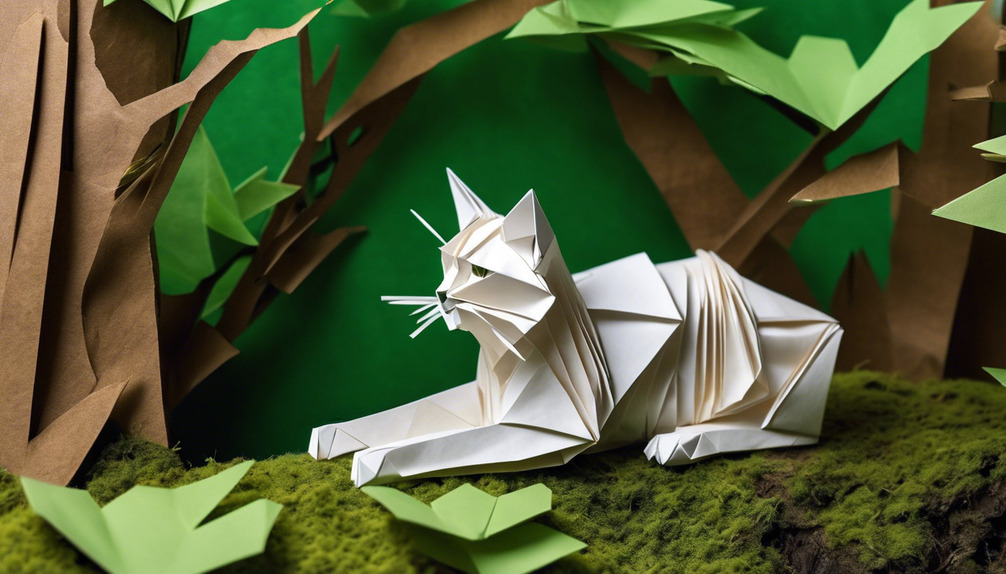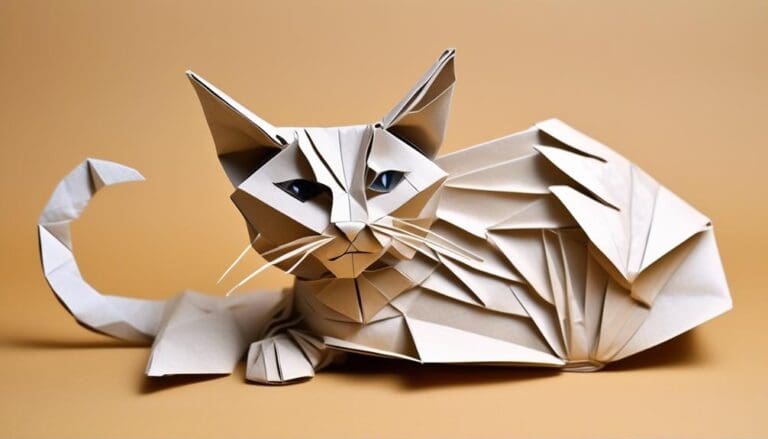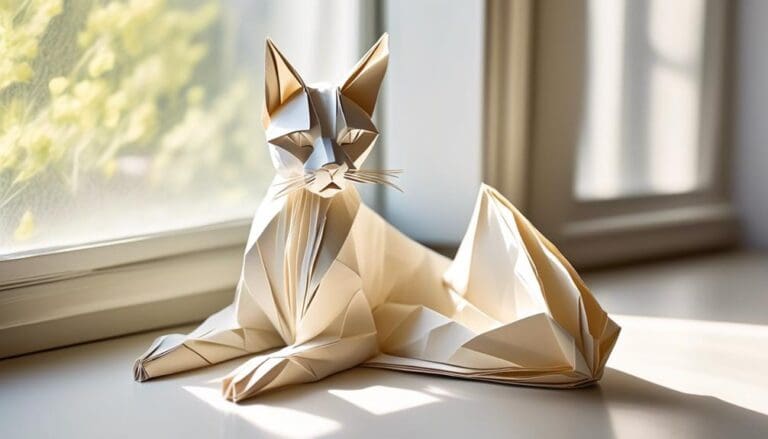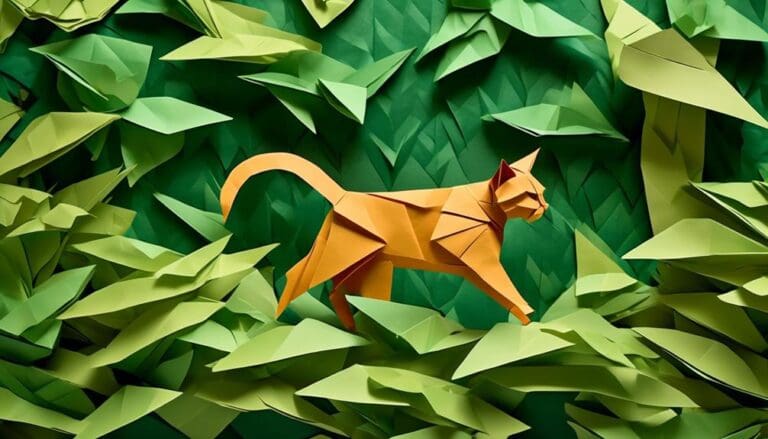Do you think it’s true that cats always get weaker as they age? If you care about your cat, you’ll naturally want to make sure they stay healthy, especially when they get older.
The good news is that there are proactive steps you can take to help your aging cat maintain muscle tone and strength. From tweaking their diet to ensure they’re getting the right balance of nutrients, to finding engaging ways of keeping them active, these strategies can make a significant difference in their quality of life.
It’s important to approach this gently and with a keen awareness of your cat’s individual needs. Stick around to uncover the seven key strategies that can help your beloved cat stay spry and healthy well into their twilight years.
Key Takeaways
- Regularly adjust the cat’s diet to increase protein and reduce unnecessary carbohydrates, as a diet rich in good quality protein can help maintain muscle mass and overall vigor.
- Provide smaller, more frequent meals throughout the day to prevent muscle breakdown and ensure proper hydration by providing plenty of fresh water.
- Staying active through interactive play sessions and regular physical activity is crucial for aging cats to maintain muscle tone and overall vitality, while also strengthening the bond with their owners.
- Create a tailored exercise routine for aging cats, starting with a thorough physical examination by a veterinarian, and gradually increasing the intensity and duration of exercise routines to build and maintain muscle mass.
Balanced Dietary Adjustments
To preserve your aging cat’s muscle tone, it’s essential to regularly adjust their diet, increasing protein while reducing unnecessary carbohydrates. As your senior cat navigates through their golden years, they rely on you to make balanced dietary adjustments that cater to their evolving needs.
Muscle loss can be a natural part of aging, but with a diet rich in good quality protein, you can help maintain their muscle mass and overall vigor.
Ensure that the food you’re offering your beloved cat is packed with the nutrients necessary for sustaining muscle health. Smaller, more frequent meals throughout the day can prevent muscle breakdown and support their body’s natural processes. Remember, hydration plays a pivotal role as well, so always provide plenty of fresh water to keep their muscles well-nourished and functioning properly.
You’re not alone in this journey; consulting with a veterinarian can give you the confidence that you’re making the best choices for your senior cat. Together, you can develop a personalized nutrition plan tailored to their specific needs, promoting a happy, healthy, and active life for your cat.
Regular Physical Activity
You know how important staying active is for you, and it’s just as crucial for your aging cat.
Interactive play sessions not only keep their body engaged but also encourage those natural hunting and pouncing behaviors that are key to their wellbeing.
Let’s explore how you can make these activities a fun and regular part of their routine.
Interactive Play Sessions
Engaging your aging cat in interactive play sessions can significantly help maintain their muscle tone and overall vitality. These moments of joy not only boost their activity levels but also strengthen the bond you share. Remember, older cats may not be as sprightly as their younger counterparts, but they still benefit immensely from regular, gentle play.
Here’s a simple guide to keep track of interactive play sessions:
| Day | Activity Type | Duration |
|---|---|---|
| Monday | Feather Wand Tease | 10 mins |
| Tuesday | Laser Chase | 5 mins |
| Wednesday | Puzzle Feeder Games | 15 mins |
| Thursday | Box Exploration | 10 mins |
| Friday | Soft Ball Toss | 5 mins |
Encouraging Natural Behaviors
Encouraging your senior cat to stay active through regular physical activity is vital for sustaining muscle tone and overall wellness as they age. As their guardian, you can help prevent the loss of muscle mass and mitigate risks of degenerative joint disease by fostering an environment that supports their natural behaviors.
Offer your cat opportunities to engage in play that simulates the hunting and pouncing they’re instinctively drawn to. Interactive toys and puzzles can captivate their attention and encourage movement.
Ensure that their playtime includes low-impact exercises, such as gentle play sessions, which are kind to their aging joints. By creating a safe space with soft surfaces and secure climbing structures, you’re not only nurturing their body but also their spirited nature.
Tailored Exercise Routines
Creating a tailored exercise routine for your aging cat can be a loving way to support their muscle health and keep them agile as they grow older. As your cat enters their senior years, maintaining a good muscle condition becomes crucial for their overall well-being.
It’s essential to start with a thorough physical examination by a veterinarian. They’ll guide you on safe and appropriate exercises tailored to your cat’s individual needs.
Gentle play sessions and interactive toys can serve as low-impact activities that are just right for senior cats. These exercises respect their reduced mobility while still encouraging movement to preserve muscle tone. Think of these sessions as a special time to foster your bond and provide the physical engagement your cat requires.
Incorporating regular physical therapy techniques, like stretching or range-of-motion exercises, can significantly benefit your cat’s joint mobility. It’s a nurturing way to help them maintain strength, ensuring that every movement is as graceful as possible.
Remember to gradually increase the intensity and duration of your cat’s tailored exercise routines. It’s a compassionate approach to help them build and maintain muscle mass, promoting a healthy and vibrant life even in their golden years.
Weight Management Practices
To safeguard your aging cat’s muscle health, it’s vital to manage their weight through a balanced diet and regular exercise. A senior cat’s body condition can shift, leading to loss of muscle and unintended weight loss, disrupting their overall well-being. It’s essential to assess their body condition score (BCS) and muscle condition score (MCS) regularly. This helps to detect any signs of muscle loss and adjust their care accordingly.
Nutrition, tailored to your cat’s specific needs, is the cornerstone of maintaining a healthy weight. Consult with a veterinary nutritionist if your cat has complicated medical conditions. Reputable experts, like the Clinical Nutrition Team at Cummings School, can guide you towards the optimal diet for your cat’s unique situation, ensuring they receive all the necessary nutrients to support muscle maintenance.
Incorporate gentle, low-impact activities into their daily routine to keep their joints flexible and muscles strong. Consider physical therapy techniques designed for senior pets, which can be both soothing and beneficial for their body condition.
Supplemental Nutrient Support
As your beloved mature cat grows older, it’s essential to support their health with the right balance of nutrients that can help sustain muscle mass and overall vitality. Incorporating specific supplements into their diet may offer additional benefits that can keep them strong and active.
Here are key nutrients that might benefit your aging cat:
- Omega-3 fatty acids: These can help support muscle maintenance and are also known for their anti-inflammatory properties, which can be beneficial for joint health.
- Glucosamine chondroitin: A well-known supplement that supports joint health and may help preserve muscle function by keeping your cat more mobile and comfortable.
- Antioxidants: These can aid in supporting immune function, which is crucial for an aging cat’s overall well-being.
Always consult with a veterinarian to identify the most appropriate supplemental nutrients for your cat’s unique needs. It’s important to ensure that any added support aligns with their existing health conditions. Regularly observing your cat’s response to these supplements allows for necessary adjustments, ensuring a tailored approach to maintaining their muscle tone and happiness.
Veterinary Health Monitoring
As your cherished cat ages, keeping a close eye on their health becomes your silent promise to them. Regular vet check-ups are a cornerstone of catching any changes early, ensuring your cat gets the care they need swiftly.
It’s through these loving actions that you can help maintain their muscle tone and overall well-being.
Regular Check-Up Importance
Ensuring your aging cat maintains strong muscles and healthy joints starts with regular veterinary check-ups, a cornerstone of preventative care. These visits are your ally in spotting early signs of disease, including common afflictions like kidney disease, which can impact your cat’s overall well-being.
Veterinarians can offer management and treatment options tailored to your cat’s needs. Consider this:
- Diagnostic tests, such as X-rays, evaluate joint and muscle health.
- NSAIDs may be prescribed to reduce pain and inflammation.
- Complementary treatments like physical therapy or acupuncture support muscle tone.
Detecting Health Changes Early
While regular veterinary check-ups are vital, it’s equally important to keep a close eye on your cat’s physical condition between visits to catch any subtle changes that could indicate muscle loss. Gently feel the muscles over your cat’s back, head, shoulders, and hips regularly to assess their Muscle Condition Score (MCS).
This practice helps detect early signs of muscle loss, even in cats that may not show obvious signs due to being overweight or appearing thin. Early detection is key for managing any underlying disease and can lead to more effective treatments, including tailored nutrition plans and appropriate exercises.
Environmental Enrichment Activities
To keep your aging cat vibrant and engaged, consider introducing interactive toys and puzzles that challenge their mind and body. As cats age, their needs change, and adapting their environment can significantly enhance their quality of life. Environmental enrichment activities aren’t just luxuries; they’re essential elements that help maintain your beloved cat’s mental sharpness and physical agility.
By integrating these activities into your cat’s daily routine, you’ll be helping them to stay moving around, which is crucial for preserving muscle tone.
Here are some thoughtful ways to enrich your cat’s environment:
- Design a multi-level space with climbing structures and scratching posts to encourage your cat to stretch and climb.
- Introduce feeding puzzles or slow feeder bowls to mimic the hunting experience, combining mealtime with a stimulating physical task.
- Create a cozy window perch or a safe outdoor enclosure where your cat can bask in the sun and observe nature, offering both relaxation and mental engagement.
Remember to rotate and vary these enrichment activities to keep your cat’s interest alive. Your devotion to their well-being shines through these gentle efforts, bringing joy and vitality into their golden years.
Frequently Asked Questions
Do Cats Lose Muscle Tone as They Age?
Yes, your cat will lose muscle tone with age, which can impact their strength and movement. It’s natural, but you can support their well-being with care and regular vet visits.
How Do You Strengthen a Senior Cat’s Back Legs?
To strengthen your older cat’s hind legs, begin with simple playtime that promotes stretching and activity. Get advice from your vet on specific exercises; they can help you maintain your cat’s mobility as they age.
How Do You Treat Elderly Cats Losing Muscle Mass?
To address your elderly cat’s muscle loss, ensure they eat a diet high in protein and engage in light exercise. Also, make sure to take them for regular veterinary check-ups to maintain their health.
How Do You Fix a Cat’s Muscle Wasting?
You’ll want to consult your vet to address your cat’s muscle wasting. They may suggest specialized diets, medications, and gentle exercises tailored to your cat’s needs and overall health condition.




